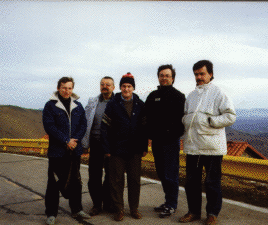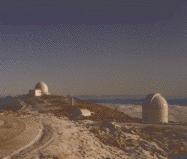Main Scientific Results of the OGLE-I Project
-
discovery of the first microlensing events toward the Galactic bulge
(Udalski et al. 1993)
-
first determination of the optical depth for microlensing toward
the Galactic bulge
(Udalski et al. 1994a)
-
discovery of the first microlensing by a binary object - OGLE-BUL-7
(Udalski et al. 1994b)
-
first system of detection of microlensing events in progress
(
Early Warning System, EWS,
Udalski et al. 1994c)
-
the Galactic structure analysis - evidence for existence of a bar
in the Galaxy
(Stanek et al. 1996)
-
publication of extinction maps towards the Galactic Bulge
(Stanek 1996)
-
variable stars search in the direction of the Galactic center:
"Catalog of Periodic Variable Stars in the Galactic Center"
(Udalski et al. 1997) including 2861 objects
-
photometry of globular clusters - discovery of numerous detached
eclipsing binaries in omega Cen and 47 Tuc
(Kaluzny et al. 1996)
-
photometry of dwarf galaxies in Sculptor
(Kaluzny et al. 1995) and Sagittarius
(Mateo et al. 1996)
First Phase of the Optical Gravitational Lensing Experiment - OGLE-I
|
The OGLE project started in 1992 and the Galactic Bulge has been selected
as the first target. Observations are carried out at the Las Campanas
Observatory, Chile (LCO) which is operated by the Carnegie Institution of
Washington.
|

OGLE-I team at Las Campanas Observatory,
|

100" du Pont telescope and 24" Canadian telescope (right) at Las Campanas Observatory. Polish telescope will be located between the astrograph house (in the middle) and seeing tower. |
In 1994 observing season a new feature is implemented in the OGLE data
system: the Early Warning System (EWS). It allows
the detection and identification of microlensing events in real time.
Thus, the system makes it possible to reschedule observations to obtain the
best coverage of a microlensing event while it unfolds, as well as to
arrange follow-up photometric and/or spectoscopic observations from other
observatories.
|
|
|

View of the Las Campanas Observatory from the 100'' du Pont
telescope. 24'' Canadian telescope (left) and 40'' Swope telescope are
seen.
|
 back
back